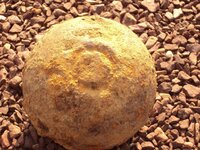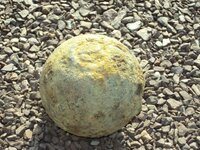pro778
Full Member
Can you take a look at this and tell me what you think. Is this a cannon ball?
It weighs around 7 lbs. and is 3 7/8"
Is the circular spot a fuse? Thanks for the help!
It weighs around 7 lbs. and is 3 7/8"
Is the circular spot a fuse? Thanks for the help!





